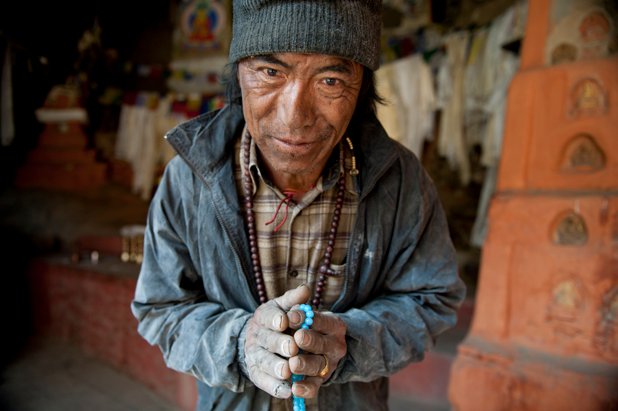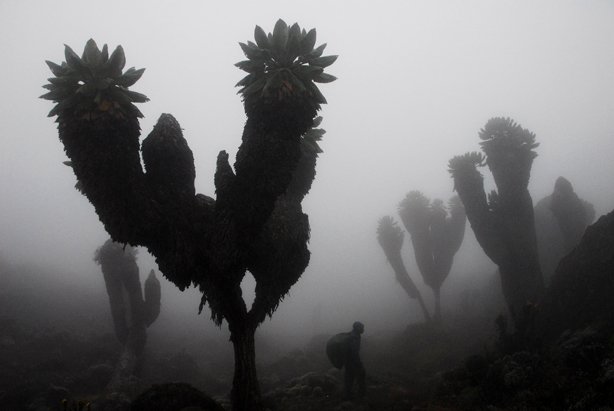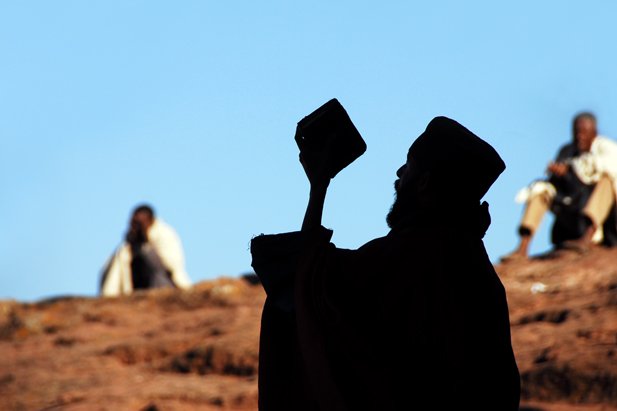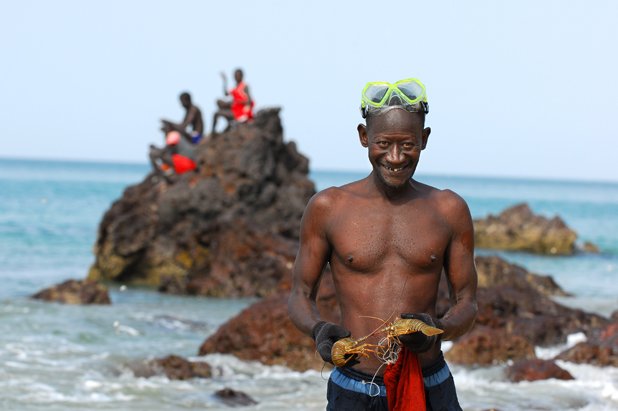U.S.A. –
With a vision of bridging cultural barriers and connecting to the people, Darren Ornitz set out to explore the lands of more than 25 countries. Emaho caught up with Darren to discuss the causes and effects of his ventures.
Emaho : Your academic background is diverse. You started off with Public Communications and then, after transferring to Fordham University, graduated with a degree in African Studies and Fine Arts. What was the reason behind the choice of the subjects you majored in?
I wish I could tell you. It was really just a natural evolution as opposed to a well thought-out plan. I went to Syracuse University freshman year where I was studying photography at their journalism school. The whole social scene and general environment wasn’t what I was looking for. I felt like I wanted to go to school in a place where I could integrate my studies with more of the “real world”, not be totally isolated on a college campus. I eventually found myself at Fordham University in New York. One of my professors was Sudanese, and the African History class I took with him helped spark my general interest in the major. I’ve always been drawn to understanding and learning about places that are often greatly misperceived. These studies opened my eyes to a whole continent. Since college I have spent a lot of time throughout Africa, both independently and on assignment. In terms of my art studies, well that was easy. It helped fulfill my creative side.

Village of Ghiling, Mustang, Nepal. A herder leaves town with his droves of goats where he will spend potentially many days letting them graze.
Emaho : From African Studies and Fine Arts to photography and travelling the world. When and how did you reach here?
Cause and effect of course! It’s fascinating to look back actually, as I am sure it is for everyone, and see the story you have been creating. It’s a process and it never ends. Bridging cultural barriers, and understanding and connecting to different people, their ways of life, have always been fundamental interests of mine. Photography serves as the tool through which I can not only do this but also share the world with others.

Stone Town, Zanzibar. Kids play on the beach in Stone Town. A dhow, a traditional Arab sailing vessel historically used to transport good between East Africa and the Persian Gulf, can be seen in the background.
Emaho : You have travelled to more than 25 countries. You have travelled extensively throughout Africa and Asia, including Zimbabwe, Yemen and Nepal. Was this a conscious decision? If yes, then why?
Yes. I have to give my dad credit for planting the adventure seed in me at an early age. He really taught me, whether intentional or not, to open my eyes to seeing the world through an unfixed lens. Of course, all people and places have their differences but one commonality I have experienced through my travels in the third world primarily, is the general hospitality and openness of the people I have met. This was what especially drew me back to countries in Africa. I seem to be drawn to places where a gas station might be a luxury. My travels are a constant source of education, and they have given me a stronger sense of gratitude, more patience, and a more dedicated intention to understand and extend kindness to others. In many of the places I have travelled to, the people have relatively had very little, but what they do have they will always share. It may sound silly to some, but it’s this type of compassion that will save the world from the destructive course we are on. It’s humbling, especially for someone living in New York City, where the general sense of entitlement and lack of warmth in comparison is very high. Go knock on someone’s door in rural Ethiopia. They probably will insist you come in for tea. Go knock on someone’s door in my neck of the woods and they will probably think “What does this person want and why is he bothering me during the season finale of American Idol?” I’ve learned the most, and had the most inspiring experiences, in places I least expected.

Kendwa Beach, Zanzibar. Wearing their traditional Swahili dress, these women and girls walk down the beach after collecting sea urchins.
Emaho : Your recently visited Mustang in Nepal and published your story ‘The Lost Kingdom of Mustang’. What spurred you on to do this?
I was drawn to Nepal because of my ongoing studies in Tibetan Buddhism. Out of all the cultures in the world, I have profound respect and admiration for the people of Tibet. What they have endured and what they continue to endure at the expense of the Chinese, all the while doing their best to preserve their culture, is remarkable. This is a country of people who have been oppressed, discriminated against, and persecuted, but who continue to promote and live by their views of peace and non-violence. It’s a society the whole world should look up to as an example to follow. If you want to see a collection of photographs from Mustang you can visit my website.

Popenguine, Senegal. A diver shows off his morning catch.
Emaho : In addition to covering China’s growing presence in the Tibet Autonomous Region reaching Mustang, you have also covered rallies for a Free Tibet. Tell us about the developments and effects on Tibet’s people and culture that you have observed.
I can’t comment too much on what’s going on inside of Tibet because I haven’t been there but the constant struggle and the spate of self-immolations have been heard about around the world. It’s a very sad situation. From the little I do know, Tibetans everywhere feel oppressed. Their leader, the Dalai Lama, obviously continues to live in exile; there is extreme poverty, land grabs, and their monasteries are closely monitored and treated as tourist attractions. Here in New York, the Tibetan community is very active with constant protests. In part due to the fact that the Chinese so closely restrict any media within Tibet, their struggle has not gained the attraction it deserves. Their desire to be fully heard has been ignored, fuelling more tension, more protest, and ultimately more monitoring, oppression, and discrimination.

Mustang, Nepal. The caretaker of Guru Rinpoche Cave rests his hands in prayer position infront of the caves shrine. Located deep into the mountains of Mustang, during the 8th centuryAD Guru Rinpoche was said to have used this cave as a retreat during his journey from India to introduce Buddhism into Tibet, Bhutan and other neighboring countries.
Emaho : Why do you call it the “lost” kingdom of Mustang?
Mustang used to be the “Kingdom of Lo”, the walled city of Lo Manthang serving as its capital. The monarchy was officially ended in 2008 by a Nepalese Government order. The word “lost” is really symbolic of the general threat the Tibetan culture is facing in the region from outside influences, most especially, China. China’s influence in the region is growing rapidly and has been solidified with the near-completion of a road leading from Tibet all the way through Mustang. While some seem to welcome the transition to modernity and the flow of cheaper goods, others fear the erosion of traditional ways of living.

Kathmandu, Nepal. Children training to become Buddhist Monks stand in Bodhanath with offering bowls to collect donations.
Emaho : Out of your extensive travels through Africa, you have published a separate story on the ‘Churches of Lalibela’, the centre of pilgrimage for the whole of Ethiopia. How would you describe this place and its surrounding culture?
Captivating. Enchanting. Surreal. Perhaps the most extraordinary place I have experienced. My description couldn’t do it justice though. You just have to go see for yourself. Lalibela doesn’t actually just serve as a pilgrimage for those in Ethiopia. King Lalibela, after seeing Jerusalem taken by the Muslims in 1187, had the churches built with the intention of having them serve as a new Jerusalem. Historically, people from all over have made their way to Lalibela to worship among the thirteen rock churches that were literally carved down into the earth out of a single block of volcanic rock. A maze of pathways leads you through the churches, which today are still home to priests, monks, and worshippers. It is truly the 8th wonder of the world.

Old Sana’a, Yemen. Shoppers wait their turn at a store in the market of Old Sana’a. The market in is open 24 hours a day and always still bustling at midnight.
Emaho : This year you also travelled to Nicaragua and are currently preparing for your story on ‘La Chureca’. What has been the highlight of your trip to Nicaragua?
I went to Nicaragua with a group to document the work they were doing with an organization called Fabretto Children’s Foundation. Fabretto does a lot of work with the community of ‘La Chureca’, the Spanish slang word for “city dump”. Historically, there has been a community of people who have lived at the dump and picked trash and sold scrap materials for work. The government recently built a new housing community for these families but at the same time banned trash picking. The homes are nice, but many of the people say they are worse off because they do not have that historically consistent source of income.
The highlight of my trip was when I spent a couple days with a very inspirational woman, Alejandra Mayorga, who lives in ‘La Churca’ and is trying to raise eight children on less than $200 a month. I am always so grateful when people invite me into their homes and even more so when they are open to having their lives documented. The best moments though were those when I put my camera down and just hung out with the family (which, to be honest, given the time constraints, was less often than I would have liked).

Dakar, Senegal. Professional wrestlers train on a beach in Dakar.Wrestling is a national sport in Senegal and has served as a major spectator sport since the 1950’s.
Emaho : You have worked and traveled for NGOs, humanitarian causes and independently too. What would you say is your purpose behind this? Do you find any differences in your approach when working independently as compared to an assignment for a NGO?
Photography you could say is my preferred method of activism. Shooting for different humanitarian causes goes along with my whole intention of doing what I can to understand and help others. No matter what I’m shooting, my approach is always the same: how can I best capture and express the story in front of me.

Old Sana’a, Yemen. Kids pose in the streets of Old Sana’a. They can be seen chewing Khat, a plant native to the Horn of Africa that is commonly used as a stimulant.
Emaho : How would you describe your travel pattern and where do you think it is going to take you next?
Spontaneous and unpredictable. So who knows?! Right now, I have a few exciting things going on in the States so I think I’ll be hanging around for a bit. But I’m also searching for an international story/cause to shoot and bring attention to. I have a few ideas but if anyone has any stories that the world should know about, reach out!
Art & Culture Interviewed by Saraswati Bannerjee
Feature Image : Managua, Nicaragua. Alejandra Mayorga lays with her daughter inside their home in “La Chureca”. Alejandra used to earn a living off of picking trash at the city dump but with picking now illegal has since found employment as a community organizer for Nica HOPE.

















